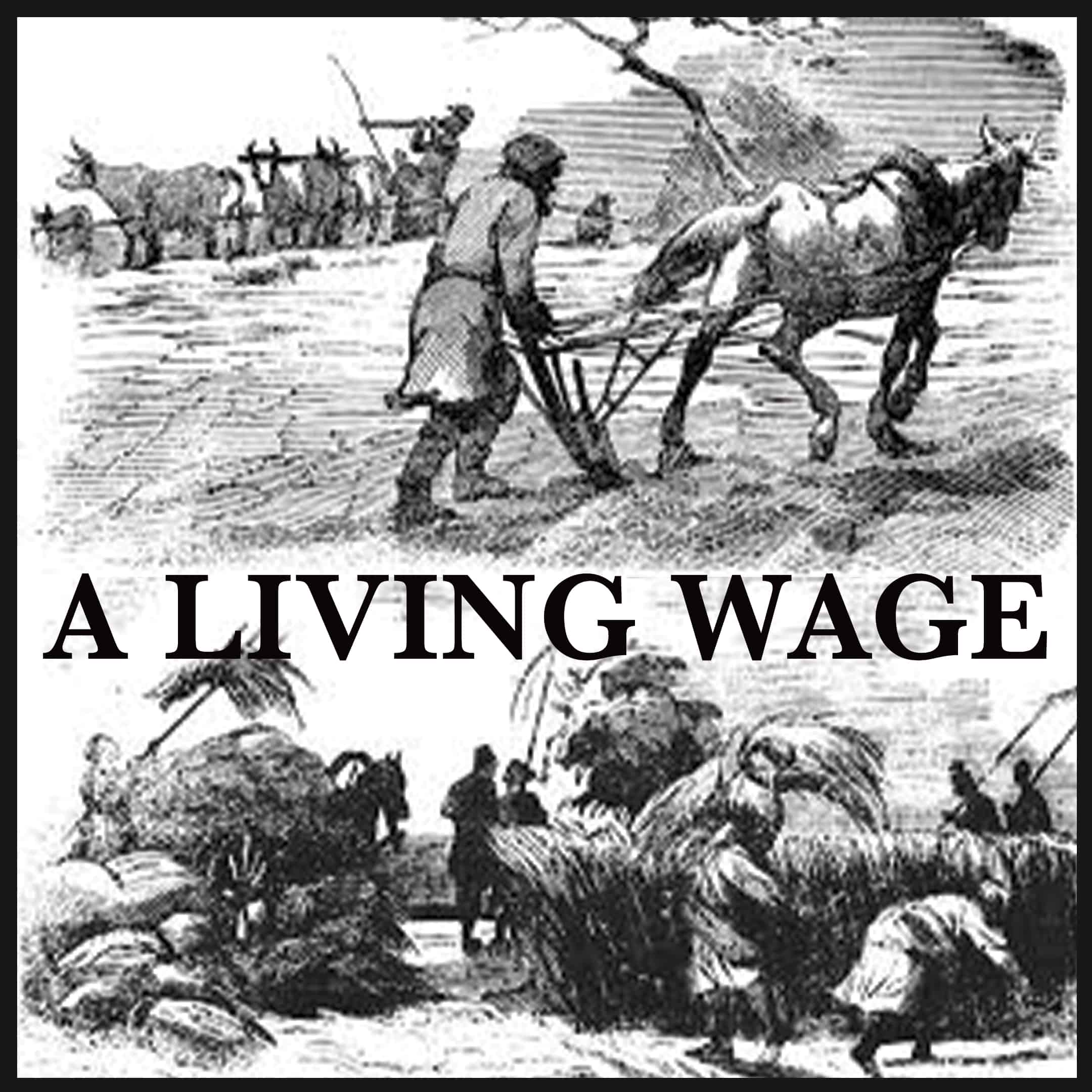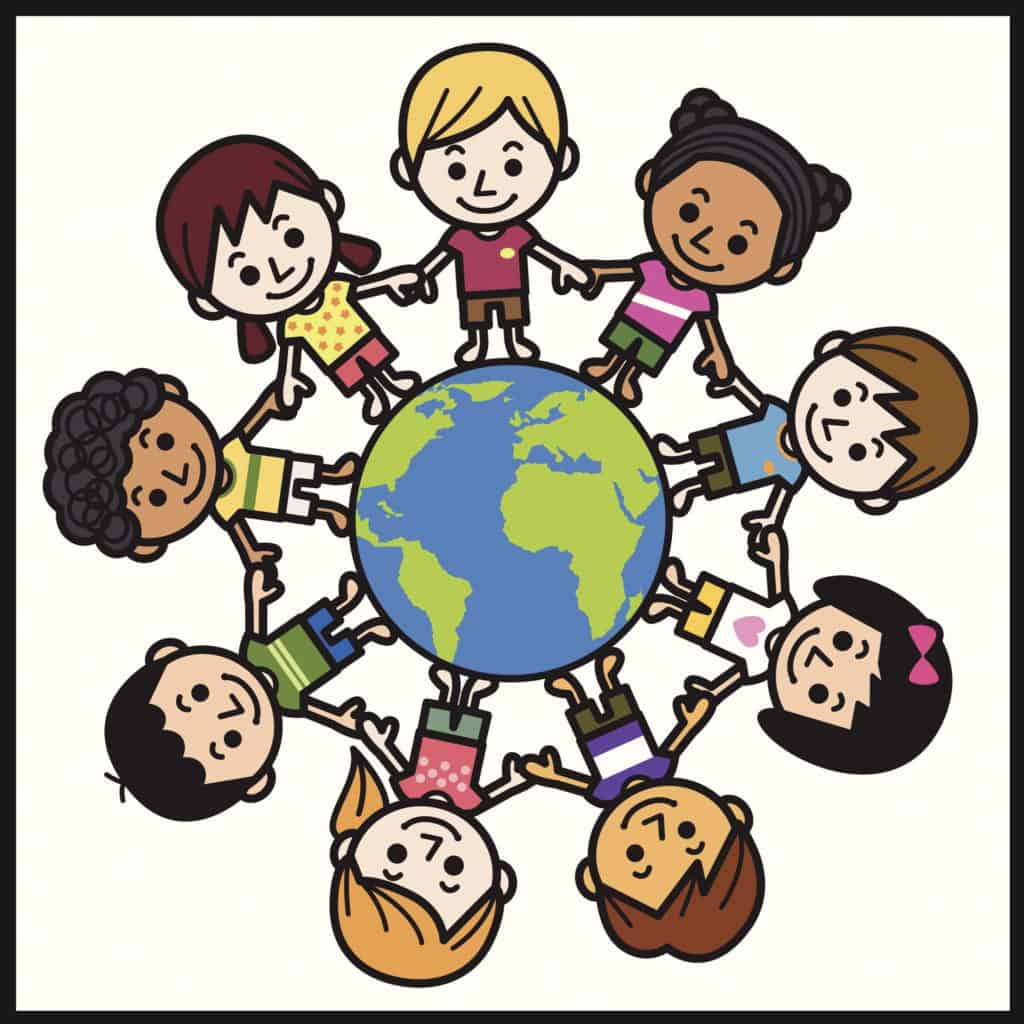
By Robert Simmons
The current model for economic success focuses heavily on Economic growth, or the steady expansion of goods and services produced from one time period to the next. On a constant fishing expedition, the private sector has recently cast its line out into Government waters, looking to snag already functioning government businesses like Medicare, Prisons, Public Transportation, Postal Services, the Military – even Public Education. Their goal is to “privatize” these businesses, meaning they want the Government to subsidize (pay for) the private sector’s management of them. This would create a guaranteed payday for the private sector, put an automatic “check” in the Economic Growth box, and who knows what other profits might be squeezed from this private sector version of a Green New Deal…but is this the best deal for the American People?
Judging by the many recent decisions within our Executive, Legislative, and Judicial Branches, the question may soon be moot. With the financial pliers granted to it by the Supreme Court, the private sector has slowly and systematically yanked the teeth out of every public institution that could hold it accountable. With all seat belt laws repealed, the private sector drives us forward, without brakes, down the path of economic growth, one (invisible) hand on the wheel. https://www.youtube.com/embed/4Tbl8rSnE18?feature=oembed
I. A Laundry List of Negative Externalities
Like an enabling parent, the Government is there to make sure the private sector cannot fail. It picks up the tab for education, infrastructure, military defense, research & development et al. It cleans up after industry. It slips agri-business a little spending money. It pulls out the credit card for all manner of welfare, subsidies, “bailouts”, and waste, even as the private sector continues to accelerate the mental and physical demise of its human capital through addiction, abuse, neglect, violence, and civil unrest; the collateral damage of a rogue economy.
Meanwhile, tucked safely off to the side, Public Education lingers; the holding tank where 90% of us have waited our turn before hopping onto the economic hamster wheel, simultaneously propelling it forward and ourselves nowhere, in a competition unwittingly designed to expedite the entire consumption of the planet. If ever allowed into the game, Public Education could do so much more.
Think of it from an economic perspective: government has in essence pre-paid this large workforce of children, yet never receives any tangible return on that investment. As economic growth is also measured in human capital and labor force, it behooves us to better utilize this energetic but desperately bored group of potential doers currently vaping and gaming away on the sidelines, looking for a purpose. Let us put them to work beta testing viable solutions to our current economic problems, and in effect shape the very future into which they will be stepping. Education’s first homework assignment? Sustainability.
II. Sustainable People
People are always the main driver in any form of economics, from consuming to producing to the people on top profiting from all of it, so in order to be efficient and effective, economically-speaking, the first products coming off our conveyor belts should be Sustainable People; this implies consistent physical, mental and social-emotional stability over an extended period of time. Broken people cost businesses and taxpayers a significant amount of money on the “back end”, from healthcare to welfare; simply replacing them does not stop the societal costs from continuing to accumulate. Sustainable People would be a smart “front-end” investment for our overall bottom line.
To manufacture more Sustainable People, the structure of education would need to change. Research has shown us that a child’s social-emotional development begins at birth, and their ability to effortlessly absorb languages falls into a much sooner time frame as well. Education needs to work alongside families from day one, with child development specialists, social workers, nannies, childcare, etc., until a two year Pre-K program takes over (ages 3-4), followed by two more years of Kindergarten (ages 5-6). As a child’s first 12 years will form the basis for their entire future, extra teacher “assistants” (counselors) must be added to every classroom during this time period, to improve everyone’s chances for success.
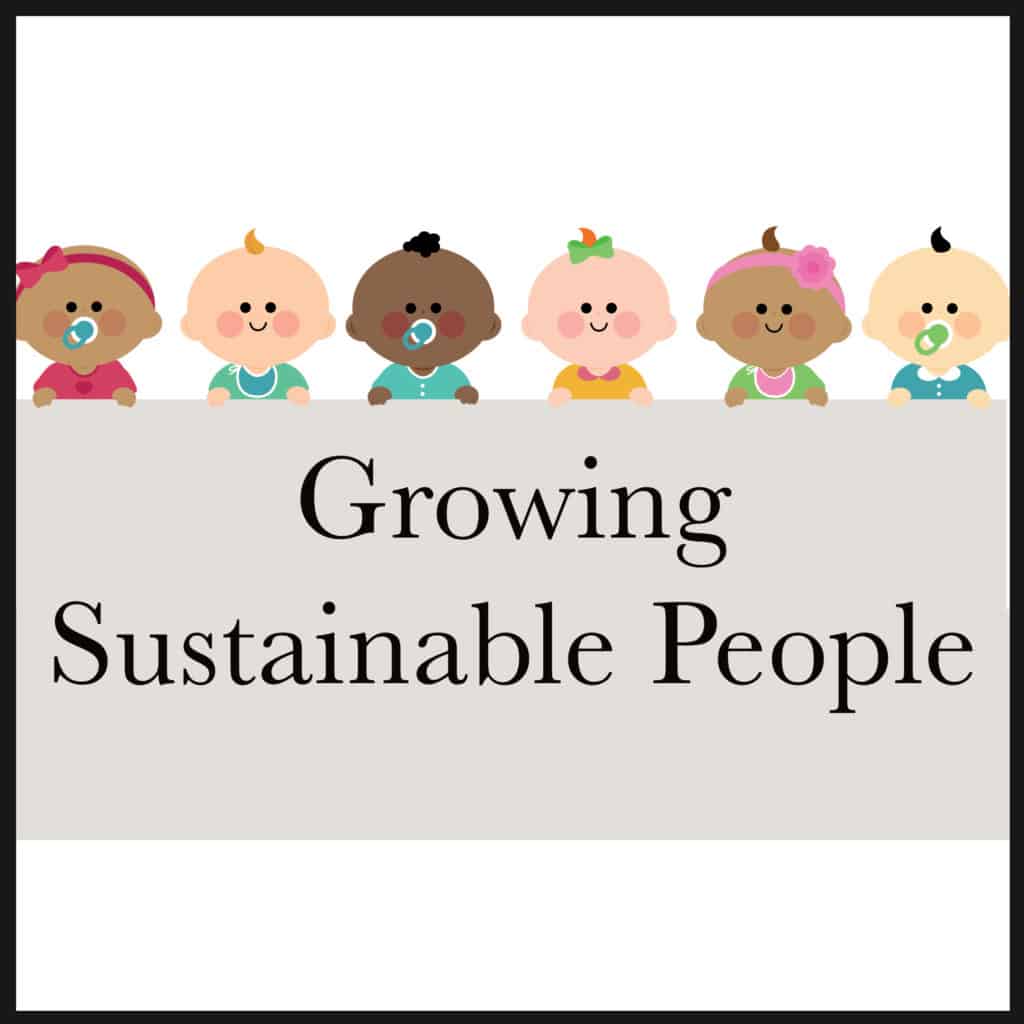
As we sow these seeds of sustainability, we might as well reap the benefits in real time. Babies could help younger students identify emotions and develop empathy skills. Toddlers could contribute to the mental health of local senior citizens. Younger students could provide childcare assistance to toddlers while reinforcing early language acquisition. Middle school kids could help tutor younger students on language skills such as computer coding. Older kids could mentor or counsel the middle school kids, and create learning software for their younger peers. Meanwhile, physical fitness and sports could once again be emphasized, to teach effort, passion, “sportsmanship” and teamwork, while setting the precedent for lifelong preventive health practices.
III. Giving is the New Taking
Sustainability works from the inside out. First stop: the local community, which has a plastic waste problem. Using 3D printers, children could collect, break down, and recycle plastic into everything from new containers to polyester clothing to interlocking bricks that connect to form housing or other structures. With infinitely recyclable plastic nearly a reality, this business model, if given to schools, would be of great benefit to communities, both ecologically and economically. Someday, all infrastructure will be fashioned from recycled interchangeable parts, so worn out sections could seamlessly be replaced, turning finite resources into infinite ones. Schools could help fashion those parts. Younger kids could help, too, by growing and selling mushroom-based food containers in their communities (replacing paper or cardboard containers that get contaminated from contact with food products).
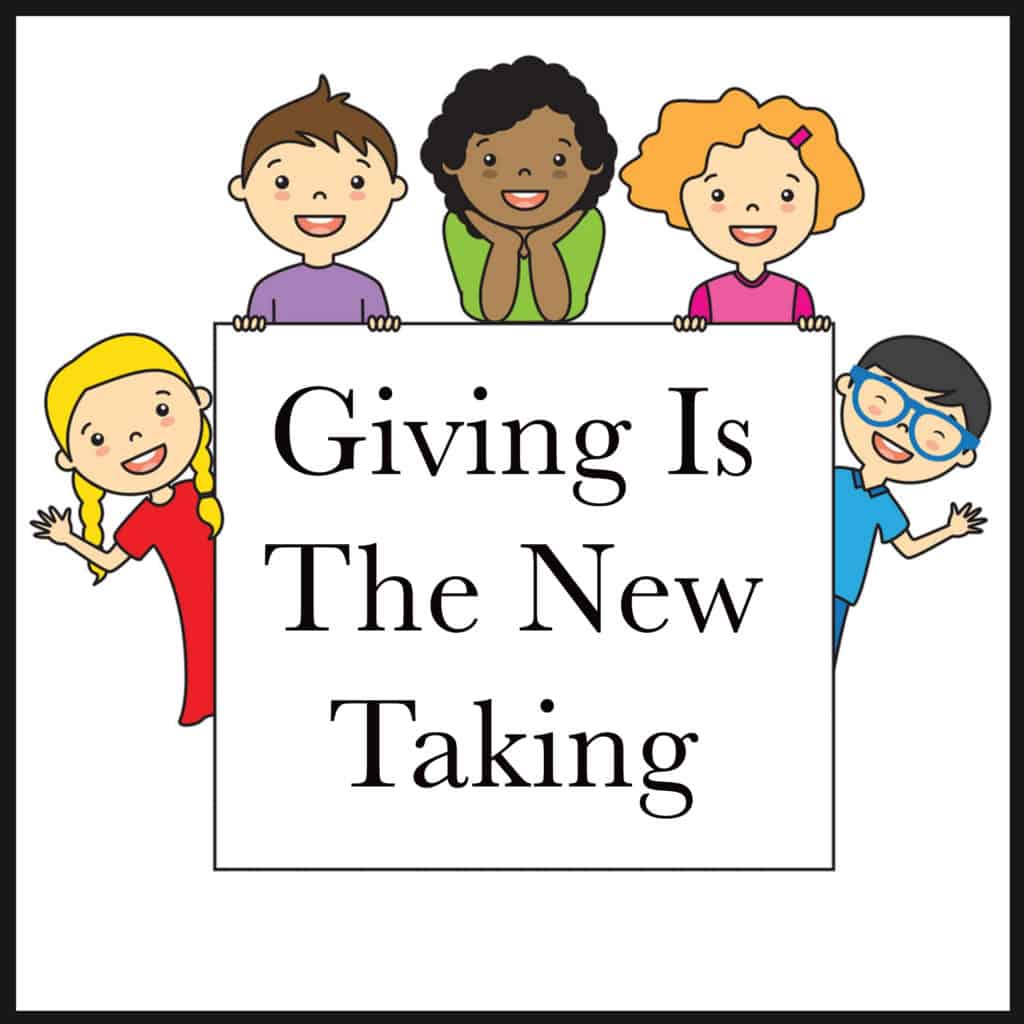
Students should be exposed to the latest tech and techniques of agriculture, from regenerative practices to the computer and robotics-driven tech of vertical farming. The “why” would be to replace all federally funded food programs with local school-run farms, bringing community closer together in the process.
Next, Sustainability could expand outward to the regional and national level. Students need to do their part extinguishing carbon emissions. The amount of solar panels needed for a clean energy grid, unfortunately, far exceeds the current output capability of the U.S. or even China. Meanwhile, Hydrogen fuel production, through the pyrolysis of water or waste biomass, needs a kickstart as well. These are both projects that could be given to schools.
Natural disasters are becoming more prevalent. FEMA has a lot on its plate. In order to teach students various building or engineering techniques, each school could supply tiny mobile housing for FEMA to use when fires or floods render parts of the population temporarily homeless. Extra housing could be produced for local use where chronic homelessness is also an issue.
IV. Improving our Reputation Abroad
While a profit-based model is indeed successful at delivering profits, it often fails at delivering basic needs to the people who need them most. While teaching our kids important science, from water purification / desalination, to converting biomass into water or fuel, to vertical or regenerative farming technology, schools can implement a Peace Program to distribute needed technology to the Bottom Billion of our society. Training could start early, with kids “adopting” a particular country and learning its language, followed by setting up communication channels with same-age peers within these countries in order to problem solve and decide solutions together. Our kids could build laptops, cell towers, self-charging batteries, vertical farms, tiny mobile plastic-based housing, portable water purification / desalination kits, biomass conversion equipment – any number of items their less privileged peers might need – and for the final assignment, travel to their assigned country, deliver these goods in person, and fulfill their goodwill ambassadorship. Our military could provide “bootcamp” training as part of the curriculum, in order to instill discipline and teamwork to each unit prior to deployment. This would help the military, too, as they will need to be present with students while they perform their mission.
In order to perfect this “Peace Track” program, we should first practice on people here at home, then along our southern border and in Puerto Rico. The far-reaching goal would be to build an actual network of Global Schools, where children from every country could visit and learn or share the technological skills necessary to secure basic needs for their communities. If people begin to feel more secure in their communities, they will likely have no reason to emigrate elsewhere. People who do make it to our border, however, could enter these Global Schools first, as a form of refuge, and instead of simply being “detained” or turned back, begin a program of language acquisition and basic needs training. Eventual entry into the U.S. could be contingent on first doing an ambassadorship themselves, possibly to their country of origin, if it is safe for them to do so. Once they help train others abroad, they could be allowed entry into the U.S. workforce if they still wish it. The long term goal would hopefully be to lessen the expense of a large military, that is mostly large to protect (or further) our large economic interests, and the ensuing unrest it foments.

V. The Emotional Mathematics of Violence Mitigation
Violence will never be fully understood until we meet face to face with our assailants, instead of only focusing on the victim’s side of the story. Open student-led discussion on bullying, cyberbullying, child abuse, hate speech, gang violence and school shootings could make a real-time impact within the school community, but we must push the conversation even further. An 18-year program should be implemented, starting with empathy training, followed by service within the local community, and culminating in a hands-on social work “apprenticeship”. Teenagers would be tasked to scientifically collect data from criminal offenders, isolate any societal commonalities, then form strategies for changing outcomes. Any knowledge gained could be integrated into our childhood development curriculum, to help spot the emotional patterns of early childhood abuse.
VI. Final Thoughts
Students should leave high school with a completed two-year associate (technical) degree from among the many disciplines emphasized along the way: Health, Education, Arts and Humanities, Human Services, Agriculture, Computer Science, and Building Systems. We must then unify the entire educational process and guarantee that this two-year degree could be taken to any US college and extended to a 4-year degree (or beyond). This could give each citizen flexibility in how they wish to navigate their life. Adults within the community would also have access to these two-year degree programs, to extend their options as well.
As a second career choice, students should also leave high school with some entrepreneurial chops. To accommodate this, the school day would be split between a “work” or “payback” track in the morning and a “passion” or “personal” track in the afternoon, to give kids a chance to pursue individual interests. Schools would be financially motivated to invest in student innovation and promote all good ideas, as they could lead to a payday for both student and school.
In order to share all knowledge, innovation, and best practices with each other, schools would need to possess a very impressive communication grid. Please put this on the bill as well. Better yet, let the students build it themselves.
In a world where value is determined by the size of the price tag, free is often dismissed as worthless. Education can no longer be handed out for nothing. Not only will education now seek to recoup much of its investment, It will also seek to get back something even more valuable: our civic duty, and our civic virtue.
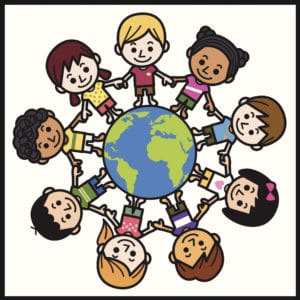
 Twenty of the 20,000 REASONS To Play A Sport…NOW
Twenty of the 20,000 REASONS To Play A Sport…NOW